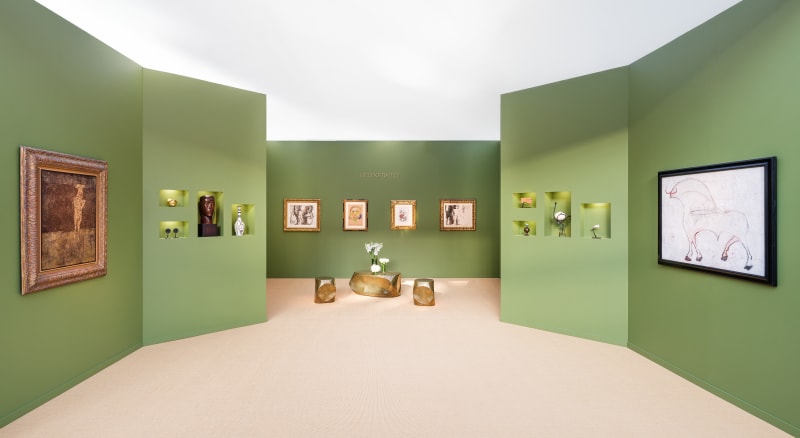ART PARIS ART FAIR 2025: Grand Palais - Booth F8
For this 27th edition of ART PARIS, the HELENE BAILLY gallery invites us to examine an oxymoron that lies at the heart of mid-20th century artistic production: representing absence.
Marked by two world wars, a growing awareness of the absurdity of the human condition, and a moral and aesthetic rejection of formal imperatives, the 20th century led certain artists to depict humanity through ghostlike figures.
The modern man, far from a triumphant Prometheus, becomes a gaunt Atlas, his head bowed under the weight of his own alienation. The works curated for this booth reflect a deeply destabilized approach to representation.
The bull, a symbol of virility, vanishes in Dominguez’s work to become invisible. On the reverse side of the piece appears its surrealist counterpart: a skeletal machine.
Similarly, two works by Giacometti depict faces that have become emblematic—now the very image of modern man. These "nuclei of violence," as the artist called them, invite the viewer, with just a few strokes, to examine their soul and how it manifests in the world.
To represent absence allows our artists to explore new techniques and artistic forms. In Le Rôdeur au site urbain, Dubuffet refines his method of assemblage paintings, while Laurens experiments with collage in Tête de femme, a technique he discovered through his friend Braque. Notably, both titles, though supporting artistic experimentation, refrain from naming their subjects, which appear without true presence—defined only by their urban condition in Dubuffet’s case.
From the challenge of representation and the growing omnipresence of absence, abstraction is born. As the culmination of absence, abstraction reaches its peak in the second half of the 20th century—represented here in our selection by Soulages and Hans Hartung.












